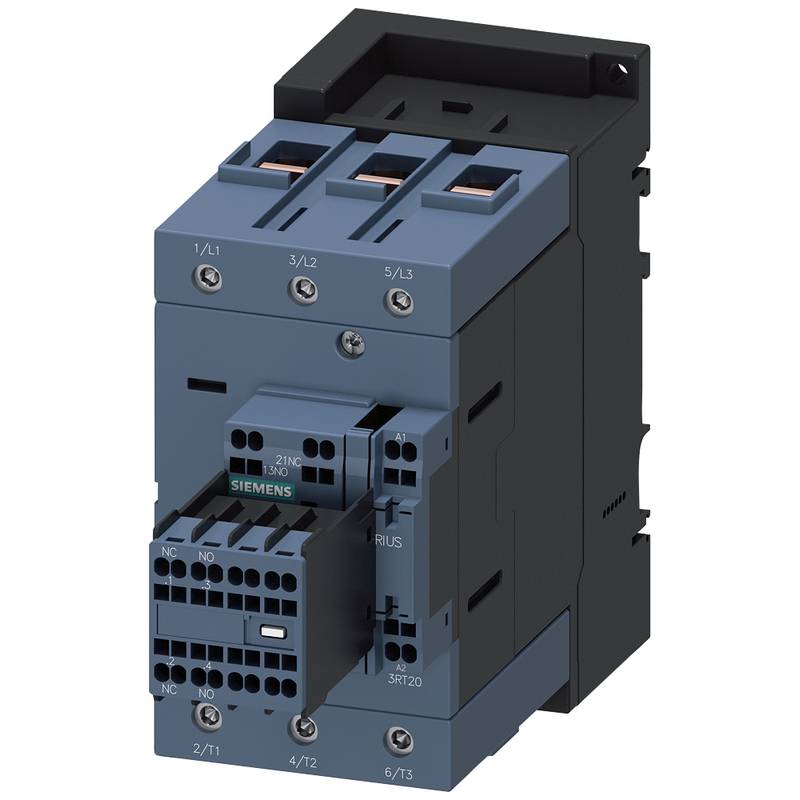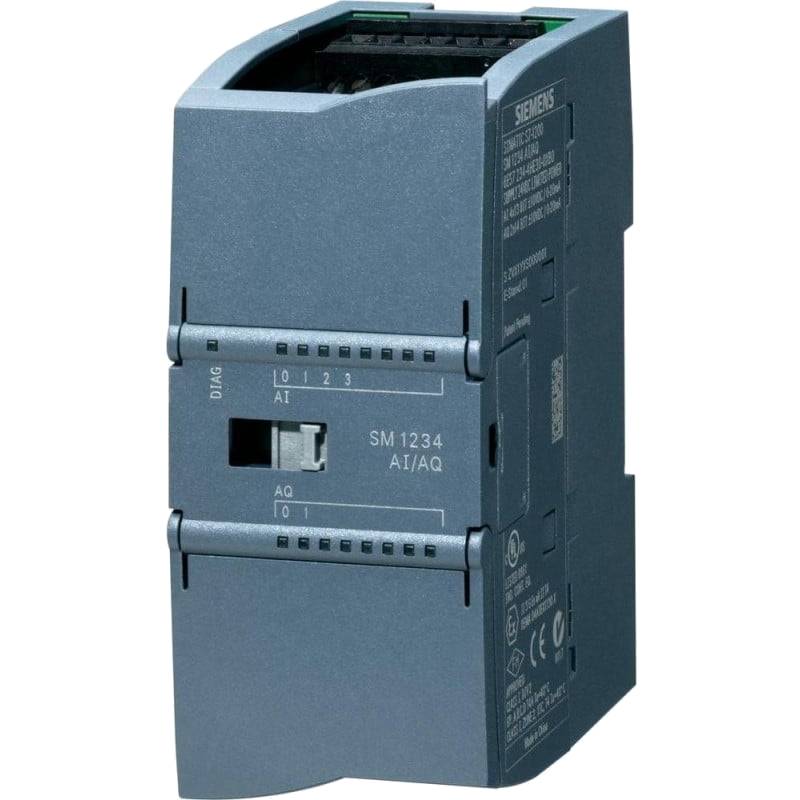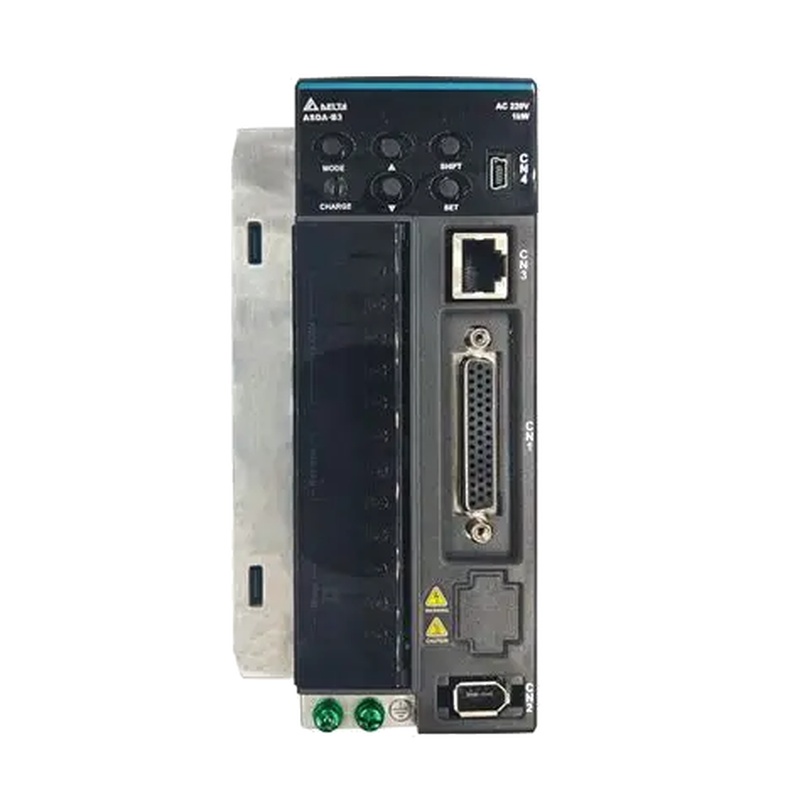
The Delta DVP01PU-H2 Motion Control Positioning Module stands as a sophisticated solution for high-precision automation tasks, engineered to elevate the performance of Delta's DVP Programmable Logic Controllers (PLCs). This module excels in applications demanding exact positioning, velocity control, and advanced motion profiling. Its core strengths lie in its robust feature set, including support for up to 4 axes of independent motion control, high-speed pulse output capabilities (up to 200 kHz), and integrated interpolation functions. Key technical parameters underscore its industrial readiness: it offers precise positioning accuracy, supports various motion modes, and boasts excellent environmental resistance, making it a reliable choice for demanding factory automation environments.
Product Specifications
| Feature | Specification |
| :-------------------- | :----------------------------------------------- |
| Supported Axes | Up to 4 |
| Max. Pulse Output | 200 kHz |
| Positioning Modes | Point-to-point, Speed, Home, Jog, Interpolation |
| Communication Interface | Built-in RS-485, Optional Ethernet/RS-232 |
| Input/Output | High-speed pulse inputs, Digital I/O |
| Power Supply | 24 VDC |
| Operating Temperature | 0°C to 55°C |
| Dimensions (W x H x D)| 86 x 90 x 60 mm |
Core Features & Market Positioning
The DVP01PU-H2 distinguishes itself in the competitive motion control landscape through its seamless integration with the widely adopted Delta DVP PLC series, offering a cost-effective yet powerful solution for complex automation projects. Its advanced interpolation capabilities, supporting both linear and circular movements, allow for sophisticated path generation, a feature often found in more expensive, standalone motion controllers. This positions the DVP01PU-H2 as an ideal choice for small to medium-sized machine builders and system integrators seeking high-performance motion control without the prohibitive cost or complexity of dedicated systems. The module's ability to synchronize multiple axes enhances its appeal for applications requiring coordinated movements, such as gantry systems or multi-axis robotic arms.
Key Application Scenarios
This motion control positioning module is particularly well-suited for a variety of demanding industrial applications. In packaging machinery, it enables precise cut-off, filling, and sealing operations with high throughput. For CNC machines and machine tools, the DVP01PU-H2 facilitates intricate cutting paths and precise tool positioning, enhancing accuracy and surface finish. It also finds extensive use in material handling systems, precisely controlling conveyor speeds, sorting mechanisms, and robotic pick-and-place operations. Furthermore, its capabilities are valuable in textile machinery for intricate pattern weaving and in printing equipment for accurate substrate feeding and registration.
Practical System Integration Guidance
Integrating the Delta DVP01PU-H2 into an automation system is streamlined by its design for the DVP platform. Installation involves physically mounting the module onto a standard DIN rail within the DVP PLC's chassis and connecting it via the dedicated backplane connector. Power is supplied via the PLC's 24 VDC input. Programming is accomplished using the Delta ISPSoft software, where specific motion control instructions are utilized to configure axes, define motion profiles, and execute commands. For example, to perform a simple point-to-point move, engineers will typically use instructions like `PLSV` (absolute positioning) or `PLSR` (relative positioning), specifying target coordinates, speed, and acceleration/deceleration parameters. Wiring of external devices, such as servo drives and encoders, connects directly to the module's high-speed input/output terminals or through an intermediary I/O module, depending on system complexity.
Operation and Risk Mitigation
Safe and efficient operation of the DVP01PU-H2 hinges on proper setup and adherence to safety protocols. During commissioning, it is crucial to meticulously verify all wiring connections to prevent short circuits and ensure correct signal integrity. Implementing software-based limit checks and homing routines is essential for preventing over-travel and ensuring repeatable positioning. Fault codes generated by the module, accessible via the PLC's status registers, provide vital diagnostic information for troubleshooting. Common issues include pulse output errors due to excessive speed or incorrect wiring, and positioning deviations stemming from mechanical backlash or inadequate encoder feedback. Always consult the official Delta DVP01PU-H2 user manual for detailed troubleshooting steps and specific error code interpretations.
Scalability & Long-Term Value
The DVP01PU-H2 offers significant long-term value through its inherent scalability and compatibility. It can be expanded by incorporating additional DVP series I/O modules to accommodate more complex machine designs. Its compatibility with various Delta servo drive series, such as the ASDA-A2 and ASDA-B series, ensures a cohesive and high-performance motion control system. For future-proofing, the module can be integrated into larger supervisory control systems via its communication ports, allowing for data exchange and remote monitoring. This adaptability ensures that automation solutions built with the DVP01PU-H2 can evolve with increasing production demands and integrate into Industry 4.0 initiatives, leveraging advanced analytics and IIoT capabilities.
Frequently Asked Questions
1. What are the primary benefits of using the Delta DVP01PU-H2 module?
The DVP01PU-H2 offers precise multi-axis motion control. It integrates seamlessly with Delta DVP PLCs, reducing system complexity. High-speed pulse output up to 200 kHz ensures rapid and accurate movements.
2. How does the DVP01PU-H2 handle different motion control tasks?
It supports versatile positioning modes, including point-to-point, speed, and homing. Advanced interpolation for linear and circular paths is a key capability. This allows for sophisticated path generation and coordinated multi-axis operation.
3. What technical specifications are crucial for integrating the DVP01PU-H2?
Key specs include its 4-axis support and 200 kHz pulse output for high performance. Precise positioning accuracy and environmental resistance are vital for industrial use. Power supply requirements (24 VDC) and dimensions are also essential considerations.
4. Can the DVP01PU-H2 control servo motors, and if so, which ones?
Yes, it is designed to interface with servo drives. It is highly compatible with Delta's ASDA series servo drives. Specific models like the ASDA-A2 and ASDA-B are excellent pairings for optimal performance.
5. What programming software is required for the DVP01PU-H2 module?
The Delta ISPSoft software suite is used for programming. This platform allows configuration of axes and motion profiles. It provides specialized motion control instructions for diverse applications.
6. What are common troubleshooting steps for DVP01PU-H2 positioning errors?
Verify all wiring for correct connections and signal integrity. Ensure mechanical systems have minimal backlash and smooth operation. Check encoder feedback for consistent and accurate data transmission.
7. How does the DVP01PU-H2 contribute to system scalability?
It integrates easily with additional DVP I/O modules for expanded functionality. Its communication ports allow connection to higher-level control systems. This facilitates upgrades and integration into larger automation architectures.
8. What safety considerations are important when operating the DVP01PU-H2?
Implement software limits and safe homing routines to prevent over-travel. Always follow proper electrical installation practices to avoid hazards. Thoroughly test all motion sequences before full production deployment.
9. What role does the DVP01PU-H2 play in Industry 4.0 initiatives?
It enables data exchange for real-time monitoring and analysis. Integration with IIoT platforms is possible via its communication interfaces. This supports advanced analytics and smart manufacturing goals.
10. What is the maximum speed at which the DVP01PU-H2 can output pulses?
The module is capable of high-speed pulse output. It can achieve frequencies of up to 200 kHz. This specification is critical for applications requiring very fast positioning or precise velocity control.























